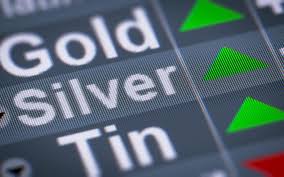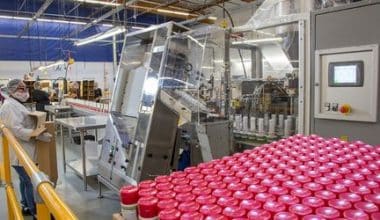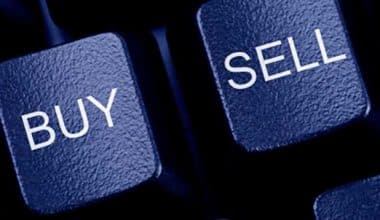This article exposes more of what commodities are, the list, types, prices, examples, the investment to make, and the Bloomberg commodities. Well, let’s get cracking…
What Are Commodities
Commodities are naturally occurring resources or items that are harvested and processed for human consumption – for example, oil, sugar, and precious metals. They are also the bedrock of our economy, as raw materials are required to manufacture food, energy, and clothing.
Commodities are frequently mass-produced and quality and quantity-standardized, which also means they are priced the same regardless of who produced them.
Commodity Stocks
You can also obtain indirect exposure to the commodities market by purchasing and selling the stock of companies engaged in the mining, extraction, growth, or harvesting of any commodity.
Because the relationship between a commodity and a stock is complex, it is critical to conduct research. Certain commodity prices move in the opposite direction of stock prices, making them a popular hedge for investors and traders. For instance, if there is a disruption in the oil supply chain, oil businesses will certainly incur short-term losses, but the price of oil will likely increase as demand exceeds supply.
Other commodity prices move in lockstep with the stocks of their equivalent commodities. For instance, if the price of gold increases, the price of a mining firm often increases as well.
Commodity Exchange-Traded Funds
ETFs are investment vehicles that track a specific asset class or basket of assets, such as commodities or stocks. While some ETFs will hold the physical assets in which they invest, for example, a gold ETF may hold a specified amount of gold bullion or coins – others will utilize more complex investments to synthetically replicate the underlying market.
Purchasing and selling exchange-traded funds (ETFs) can also be an excellent approach to obtaining exposure to a variety of commodities or commodity-related equities from a single position.
Commodities Prices
Commodities prices are determined by supply and demand forces, which implies that a range of factors can affect them.
#1. Competition
Alternative technology and items can help to diminish the demand for older commodities. For instance, the growth of renewable energies has resulted in a considerable decline in investment in oil and gas.
Additionally, new companies can have a spillover impact on the market – particularly those with more efficient supply chains and speedier production lines, which reduce costs and make the company more enticing to shareholders.
#2. Politics
Political events and policies can also affect price shifts if they affect exports and imports. For instance, increases in import duties can result in price rises.
#3. Macroeconomics
A sluggish economy frequently reduces demand for goods, particularly those used in construction and transportation. Whereas a thriving economy may result in more demand, which may result in increased pricing.
#4. Seasonality
Agricultural commodities are especially susceptible to seasonal cycles, which affect production and harvesting. Prices typically increase in anticipation of a good harvest and decrease following the harvest, when the market is overwhelmed with products.
#5. Weather
Extreme weather events and natural disasters can have an effect on the production and transportation of natural resources. For instance, colder conditions can cause the ground to freeze or jeopardize the items. Anything that has an effect on the supply chain, such as decreased output, might result in an increase in market pricing.
Read Also: WHAT DOES A STOCKBROKER DO: Top Guide on Becoming a Stockbroker
Why Should You Trade Commodities CFDs?
You may wish to trade commodities with CFDs if you meet the following criteria:
- You’re interested in gambling on commodities’ underlying prices.
- Wishing to trade both rising and declining markets – long and short positions.
- Wishing to maximize your exposure.
- You wish to invest in short-term positions.
- Also, you wish to diversify your holdings.
- You wish to engage in trading without actually owning the underlying asset.
Learn About The Commodities Trading Process
Commodities trading operates similarly to other forms of speculation in that buyers and sellers meet to exchange items. The distinction is that commodities can be purchased and sold at both current and future prices.
As previously stated, there are numerous ways to gain exposure to commodity prices. The processes required to buy and sell commodities vary according to whether you’re trading futures, spot prices, or options, or investing in stocks and exchange-traded funds.
Bloomberg Commodities
Bloomberg Commodities provides the most complete set of fundamental and market pricing data available to corporate and investment professionals worldwide. Thus, Bloomberg commodities, however, enables you to replace numerous specialist solutions on your desktop with a single solution that incorporates analytics, pricing, charting, and derivatives modeling.
Bloomberg Effects On Commodities
Below is the functionality of Bloomberg on commodities.
#1. Pricing On The Open Market
Bloomberg provides unmatched access to pricing data from exchanges, commodities brokers, price reporting agencies, and other market-related institutions. We also cover every sector that matters to you, including oil, natural gas, power, base and precious metals, agriculture, shipping, coal, carbon, and renewables.
#2. Fundamentals
To swiftly find and understand the information that matters to you, however, search a large array of basic and statistical commodities data points on inventories, stock levels, and supply and demand.
#3. Recent News and Notifications
Bloomberg, the world’s largest news agency, also covers commodities with a local perspective and a market focus. First Word Oil is a group of oil industry professionals dedicated to providing real-time coverage of breaking, market-moving news. Customized alerts, filters, and views condense the latest, most complete news, fundamental data, and market pricing on mobile and desktop; assisting you in identifying opportunities first.
#4. Charts
Bloomberg market-leading charting tools, also makes it easy to uncover commodities in market pricing and basic data. Utilize vast data and customization tools to produce the charts necessary for visualizing data, identifying anomalies, and generating your next big idea.
#5. Trading Instruments
Our comprehensive trading solutions span from exchange execution to robust option valuation tools that work with both listed and OTC options.
#6. Mapping
For effective visual analysis, overlay Bloomberg maps with everything from commodities news to vessel tracking. Combine several sources of real-time data, such as weather occurrences, power outages, and plant capacity, and rapidly assess any circumstance.
Types of Commodities
Commodities of the same type are regarded to be interchangeable as long as they are of the same grade. Below are the types of commodities in the market.
#1. Agriculture
This type of commodity includes coffee, corn (a vital source of food for cattle and humans alike) sugar, soybeans (whose oil is used to make crackers, bread, cakes, and cookies), and wheat (one of the world’s most essential food crops).
#2. Energy
This includes crude oil, which is used in transportation and the manufacture of plastics, natural gas, which is used to generate electricity, and gasoline, which is used to power light-duty trucks and cars.
#3. Metals
Metals include gold, which is used to create jewelry; silver, which is also used in jewelry and a variety of other industrial applications; and copper, which is the most extensively used type of electrical wiring.
Commodity Market Characteristics
In looking at the types of commodities, the market is inversely related to the equity and bond markets. When commodity prices rise, equity and bond prices are more likely to decline.
1. Demand and Supply: Thus, the market demand for commodities and the existing supply of such goods have a significant impact on the prices of various commodities. A rising demand combined with a limited supply might result in an increase in prices, whilst a decreasing demand combined with a greater supply can result in a decrease in commodity prices.
2. Diversification: Because commodities have an inverse relationship to other asset classes, they are prominent items that provide significant portfolio diversification. Commodity trading enables investors to maintain a healthy portfolio regardless of whether other asset classes consolidate or experience a correction.
3. Commodities Trading: This is an excellent approach to hedge against growing inflation, as the prices of major commodities such as gold, silver, and crude oil tend to climb over time. It also enables investors to increase their wealth by ensuring the long-term growth of their corpus.
4. Margin Trading: Brokers involved in commodities trading, such as IIFL, offer lower margins than brokers involved in stock and bond trading, allowing hedgers and speculators to earn more on price changes.
How Do I Trade in Different Types Of Commodities?
To trade in various types of commodities, you must first choose a stockbroker with whom to open a commodities trading account. IIFL is a market leader in India’s broking arena, providing brokerage services in a variety of asset classes including stock, commodities, currencies, and derivatives. Trader Terminal, IIFL’s proprietary trading platform, simplifies commodity trading by giving access via desktop apps and also a browser-based web application. You can trade commodity spot prices by following the steps below:
- Open an account with IIFL for commodity trading. This can also be accomplished via the mobile application or the IIFL website.
- Choose an exchange and an asset to trade in the commodity market.
- Once your account is activated, you can begin trading your favorite commodities contracts.
Commodity trading can be an excellent tool for diversifying your portfolio and mitigating portfolio risk. Whether you are a hedger or a speculator, commodity trading can be used to provide financial protection.
Done with the types of commodities, next to read is the list of commodities.
List Of Commodities
On a global scale, the most traded commodities include crude oil, gold, Brent oil, silver, corn, natural gas, soybeans, cotton, wheat, and coffee. The following table contains detailed information on select commodities from the list of traded commodities.
#1. Petroleum Crude
In the list of commodities, crude oil is the most sought-after commodity because it is refined into a variety of goods such as petroleum, diesel, and so on. Globally, geopolitical tensions over crude oil reserves have erupted. Demand for crude oil is expected to increase as demand for automobiles increases. OPEC is a group of oil-producing nations whose supply of crude oil is disrupted by wars, armed rebellions, and other events. The United States, Saudi Arabia, and Russia are the world’s top oil producers.
#2. Gold
Gold as one of the top commodities on the list has traditionally been in view as a safe haven. When the value of the US dollar falls, people begin to buy gold, and when the value of the dollar rises, gold prices fall. The US currency and gold prices are inversely related.
#3. Soybeans
Soybean is one of the commodities on the list, its prices are in concern of biodiesel demand, weather, and dollar demand.
What Are The Advantages Of Commodity Trading?
Talking of the commodities in the list, here are the advantages of trading.
#1. Transparency In Trading
Because commodity trading occurs on an exchange, neither buyers nor sellers can manipulate prices. The buyer quotes a price, the seller quotes a price, and if the two prices match, the order is in action. Price discovery for commodities is achievable without the need for sophisticated internet trading platforms, which is a significant advantage. Margin compression in commodities futures entices small traders to exploit this segment to hedge their risk and obtain further leverage.
#2. Risk Management
Because trading occurs on exchanges, you must eliminate counterparty risk. Exchanges enforce proper risk management practices to protect investors.
Important Factors To Keep In Mind When Trading Commodities
- Commodity prices influence a variety of factors, and it is critical to understand these aspects and the tactics that must be useful while trading commodities.
- To trade commodities successfully, one must have a firm grasp on the demand-supply chain.
- While increasing the leverage, the risk involved with commodity trading is also increasing.
- If you are a newbie, seek the assistance of market research professionals, as a detailed understanding and continuous monitoring of the market are requirements.
Note: Before you begin trading in commodities, familiarize yourself with the list of commodity categories and read extensively about the factors that affect the price of commodities in the list.
Commodities Investment
Contrary to popular belief, commodity trading is not the only option to invest in commodities. Here are four fundamental methods.
#1. Directly Invest In The Commodity
The simplest approach to investing in commodities is to purchase them physically. One advantage is that you avoid the hassle of dealing with a third party. Typically, you can conduct a simple internet search to locate a merchant who will sell you a specific item. When you no longer require it, the dealer will frequently purchase it back from you. However, you must arrange for delivery and storage logistics.
If you’re purchasing gold, this may be a rather straightforward process. You can easily locate an internet coin trader that would sell you a bar or coin. You can store it safely and then sell it as you like.
#2. Make Futures Contracts Investments
You can trade commodity derivatives, such as futures contracts if you have an appropriate brokerage account. However, futures contracts are primarily intended for huge organizations involved in commodity trading, not for individuals.
When trading futures, you must retain a specific amount of capital in your brokerage account, referred to as margin. One risk associated with commodity trading is that margin requirements are sometimes lower than those for stocks.
When you trade on margin, you are dealing with borrowed funds, which can significantly increase your losses. Given the volatility of commodity prices, it is critical to have sufficient liquidity to cover any margin call, which occurs when your broker requests additional funds.
#3. Make An Investment In Commodity Stocks.
Alternatively, you can invest in commodities by purchasing stock in the firms that produce them. For instance, you may invest in metals, energy, or meat stocks.
A commodity-producing company’s stock price will not always rise or fall in lockstep with the price of the commodity it produces. True, an oil production firm benefits from rising crude oil prices and suffers from falling crude oil prices. However, what matters considerably more is how much oil the company has in reserve and whether it has profitable supply contracts with high-demand buyers.
#4. Invest In Commodity Exchange-Traded Funds (ETFs) and Mutual Funds
Commodity exchange-traded funds (ETFs) and mutual funds provide exposure to commodities for those who do not wish to purchase them directly. You can invest in physical commodities, commodity stocks, futures contracts, or a mix of these.
Should You Engage In Commodity Trading?
Commodity trading entails a high degree of risk and reward. It can be an efficient way to protect your portfolio against a bear market or rising inflation.
However, you should consider it only if you have a thorough understanding of the commodity market’s supply-and-demand dynamics. This includes an understanding of both past price trends and current market conditions. If you’re just starting, you can mitigate risk by minimizing your margin usage.
The majority of commodities trade is speculative, not investing. In the near term, unpredictable events such as weather, disease, and natural disasters can have a significant impact on commodity prices. If you’re trying to invest in a commodity for the long term, commodities stocks, mutual funds, and exchange-traded funds are often a better alternative.
Commodities Example
Generally, we define a commodity as a raw resource that is useful in the manufacturing process or consumable on its own. The following is the list of some categories of commodities with their products.
Soft Commodities Include:
- Wheat, Corn, Soybeans, Soybean Oil, & Soybean Meal
- Oats
- Rough Rice
- Cocoa, Coffee
- Cotton
- Sugar
Livestock Commodities Include:
- Beef
- Pork, and lamb
Energy Commodities Include:
- West Texas Intermediary (WTI) Crude
- Light, Sweet Crude
- Brent Crude
- Natural Gas
- Heating Oil
- Propane & Uranium
Precious Metal Commodities Include:
- Gold
- Platinum
- Palladium
- Silver
Industrial Commodities Include:
- Copper
- Lead
- Zinc
- Tin
- Aluminium & Alloy
- Nickel Metric Ton
- Recycled steel
Other Commodities Include:
- Ethanol
- Rubber 1 kg
- Palm Oil
- Wool
- Polypropylene
What Are 3 Commodities?
Commodities of the same sort are regarded to be interchangeable as long as they are of the same grade.
- Agriculture
- Energy
- Metals
Is Gold a Commodity?
Yes, it is a commodity. It enables investors to increase their wealth by ensuring the long-term growth of their corpus and can also be used in similar ways to a currency.
What Is the Most Common Commodity?
Copper, crude oil, wheat, coffee beans, and gold are among the most traded commodities.
What’s the Most Valuable Commodity?
Data has become the most precious commodity in the economic sector of the twenty-first century. One of the most essential issues in determining the value of data is that it may not always transform directly into cash, but this does not diminish its value.
Is Water a Commodity?
Water is undoubtedly the most valuable resource on Earth. Without water, the importance of crops, metals, and energy to the world is null and void.
What Is America’s Number One Commodity?
These are the most imported items into the United States. Gold and crude oil are among the most exported commodities.
Is Russia a Commodity Country?
Yes, It is also the second-largest vanadium supplier in the world, which is utilized in large-scale energy storage and steel production. The country is the sixth-largest gold exporter, accounting for 4.4% of the global supply, and the tenth-largest lead exporter.
What Is China’s Biggest Commodity?
Cotton. China is the world’s largest cotton spinner. Its textile sector is also the largest in the world in terms of total output and exports.






